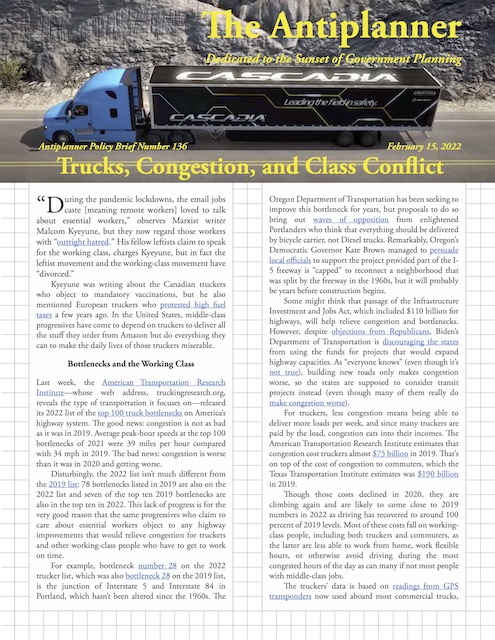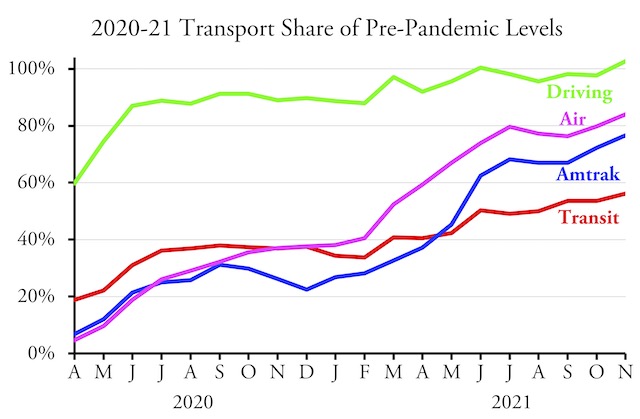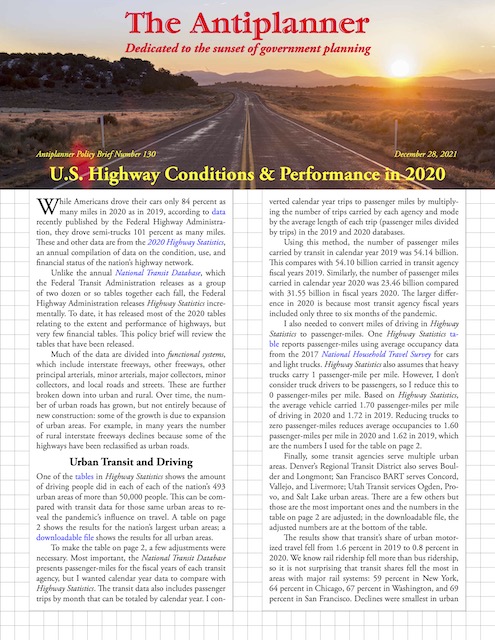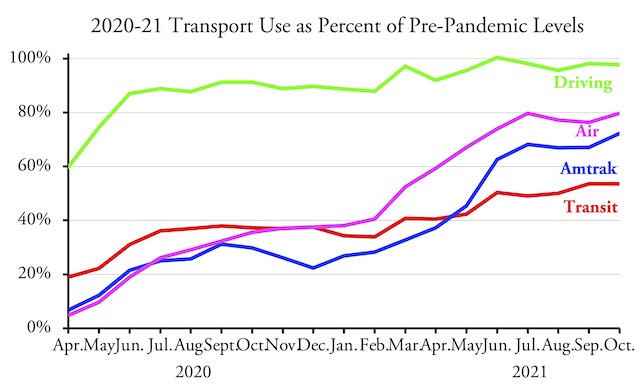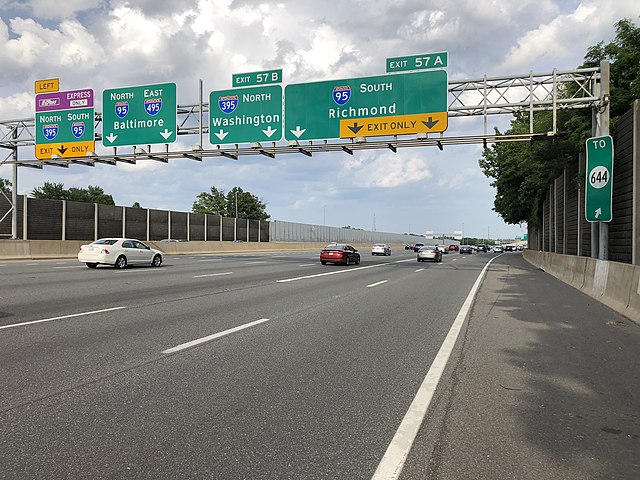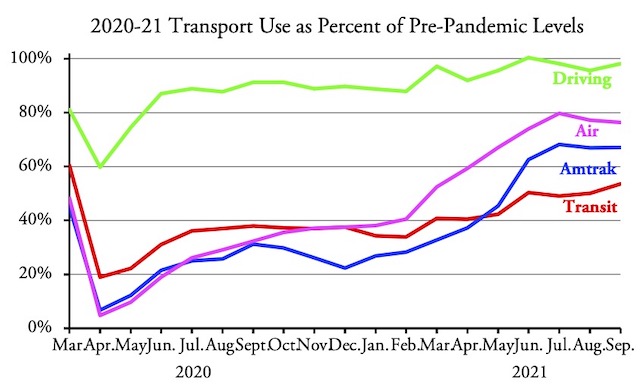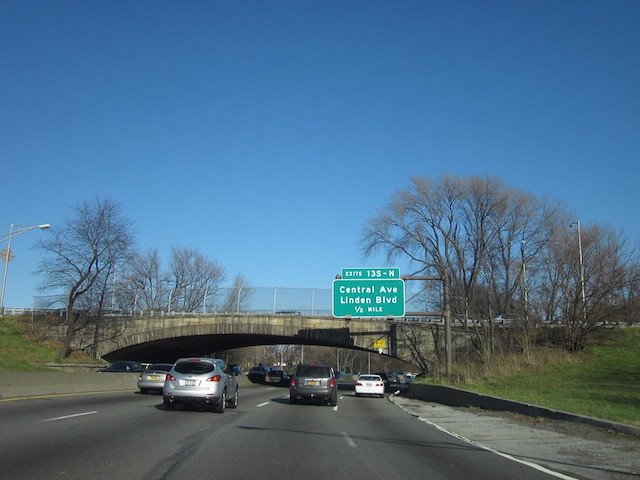Americans drove 2.7 percent more miles in December 2021 than in December 2019, according to the latest traffic volume data published by the Federal Highway Administration last Friday. According to these data, December was the seventh month in a row that driving exceeded driving in the same month in 2019.
This is a revision from previous reports because the Federal Highway Administration revised the national miles-traveled for December 2019 (shown on page 2 of the report). The preliminary estimate in 2019 was that Americans drove 273.8 billion vehicle miles in December. In 2020, this was revised downwards to 272.2 billion. But this report, for 2021, revised the December 2019 miles downwards even more to 261.8 billion. Continue reading


